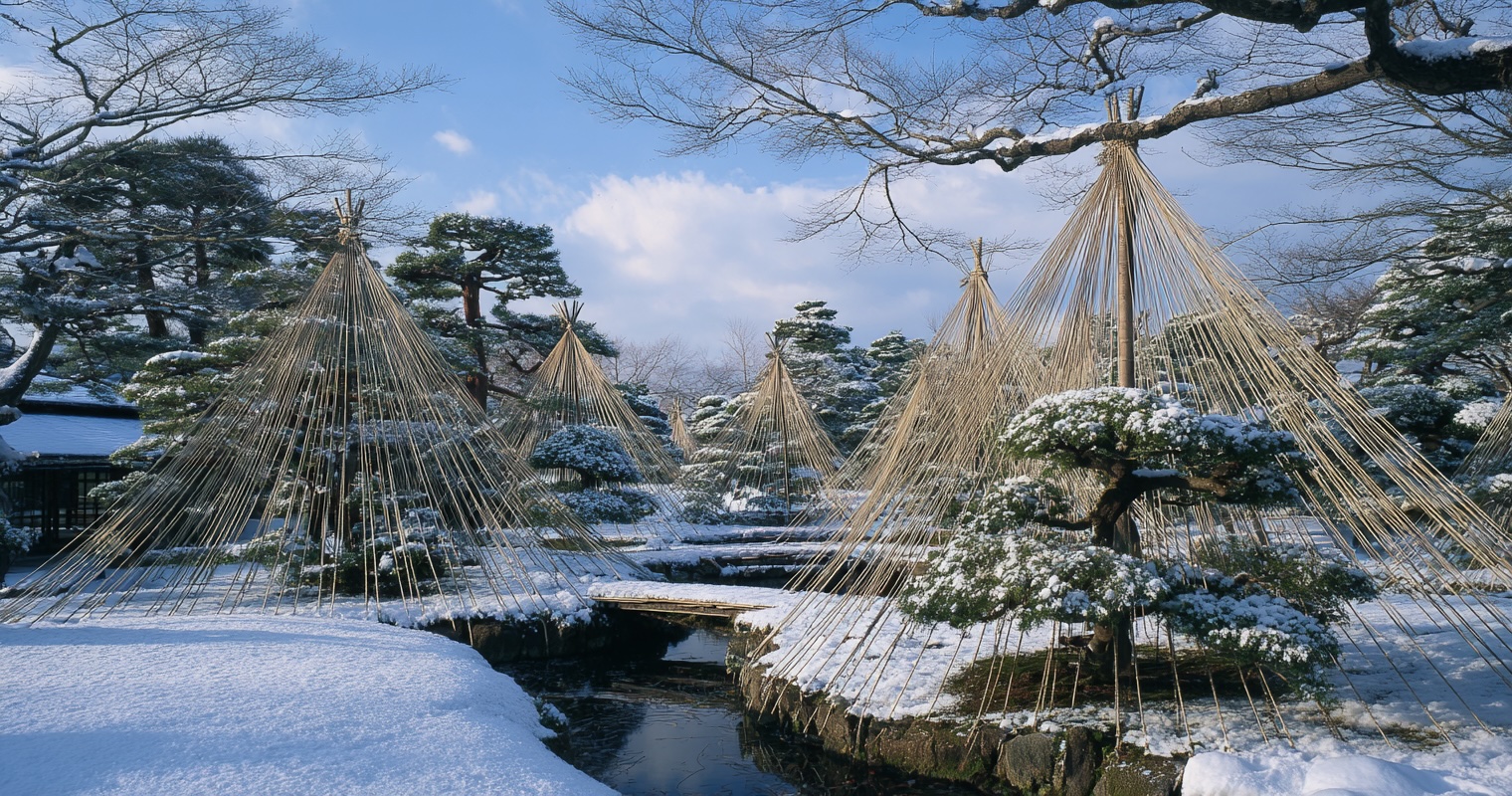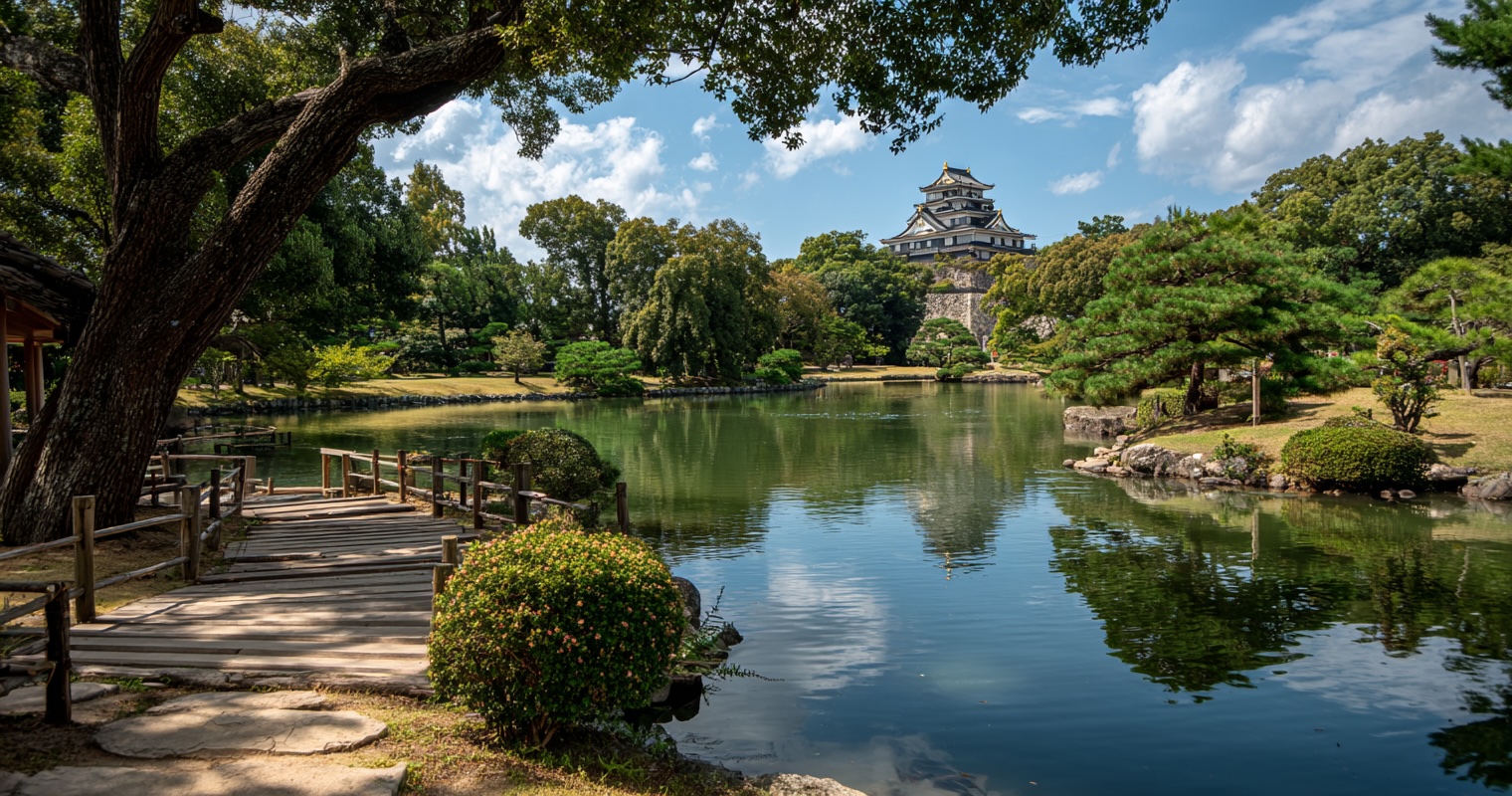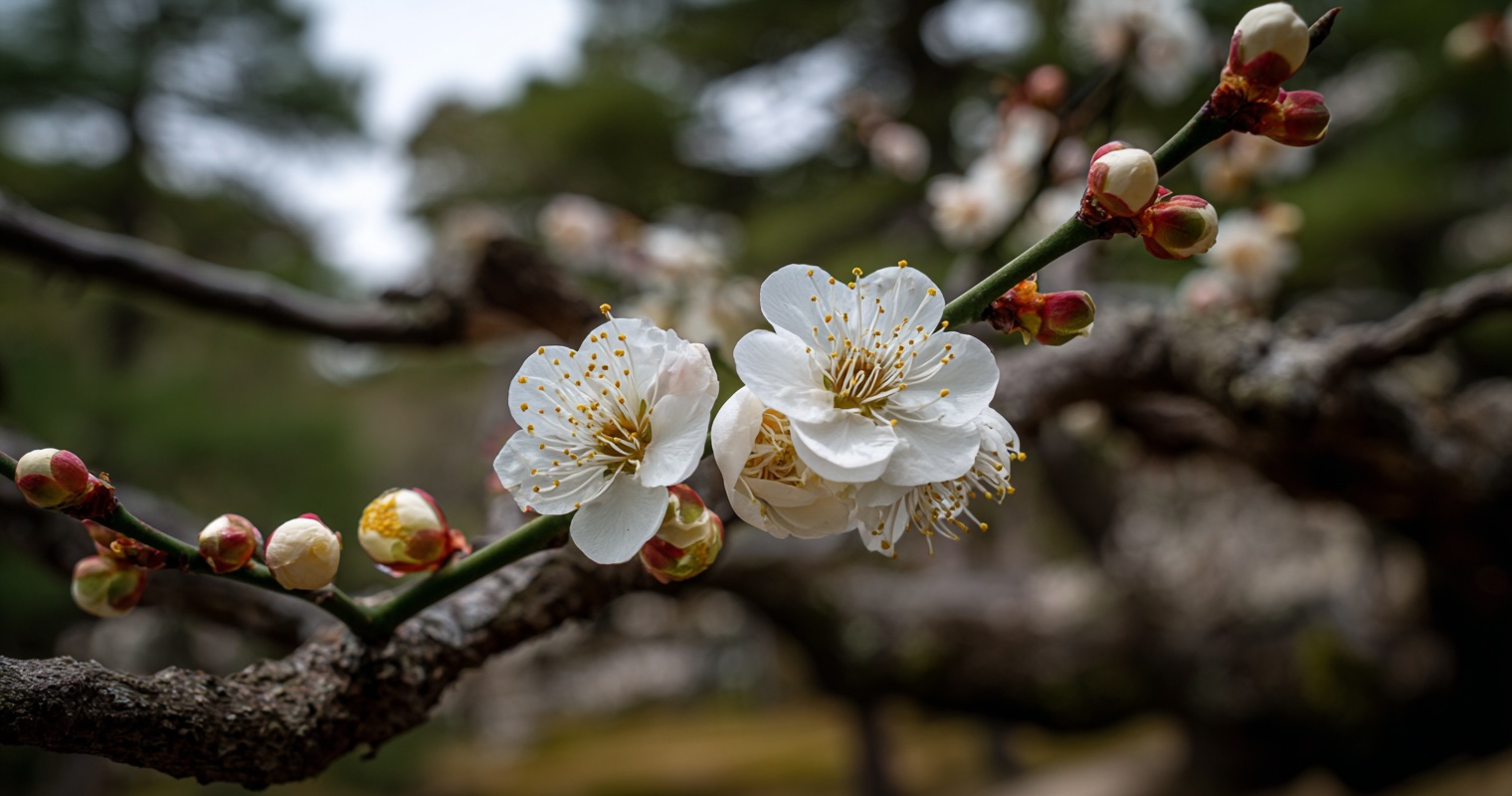
Strolling Through Serenity
Exploring Japan's Most Beautiful Gardens
There's a quiet magic in Japanese gardens — a kind of harmony that unfolds slowly, step by step. Stone paths lead through mossy trees, bridges arc over still ponds, and the sound of water blends with the breeze. Each turn reveals a scene so carefully composed it feels like stepping into a living painting.
Whether you're wandering Kyoto's centuries-old temple gardens or standing beneath a sculpted pine in Kanazawa, Japan's gardens offer a window into the country's artistic soul — one that values balance, impermanence, and the beauty of restraint.
🏯A Brief History of Japanese Gardens
Japanese garden design stretches back over a thousand years, evolving alongside the country's philosophy, religion, and aesthetics. The earliest recorded gardens, during the Asuka and Nara periods (6th–8th centuries), drew inspiration from Chinese landscape gardens, reflecting Buddhist and Taoist ideals of paradise.
By the Heian period (794–1185), aristocrats built sprawling gardens around their palaces, often centered on ponds meant to represent oceans and islands of immortality — mirroring the aesthetic found in The Tale of Genji.
Later, during the Muromachi (1336–1573) and Momoyama (1573–1603) periods, Zen Buddhism deeply influenced garden design. The focus shifted inward — toward simplicity, symbolism, and meditation. Dry landscape gardens (karesansui), like the one at Ryoan-ji, emerged as expressions of contemplation through stone and sand rather than lush greenery.
The Edo period (1603–1868) brought prosperity, and with it, the grand strolling gardens (kaiyū-shiki teien) that many visitors see today. These were designed for walking — carefully constructed landscapes that reveal new vistas from every angle, echoing poetry and seasonal change.
🌿Japan's Must-See Gardens
Each garden in Japan has its own rhythm — a dialogue between nature and art. Here are some of the most celebrated, each revealing a different side of Japan's landscape tradition.
🌸1. Kenroku-en (Kanazawa) — The Garden of Six Sublimities
Often hailed as one of Japan's "Three Great Gardens," Kenroku-en in Kanazawa epitomizes harmony and balance. The name means "Garden of Six Qualities," referring to the six ideal attributes of a perfect landscape: spaciousness, seclusion, artifice, antiquity, water, and panoramic views.
Originally developed by the powerful Maeda clan in the 17th century, the garden features tranquil ponds, arched bridges, and teahouses shaded by ancient pines. In winter, trees are famously supported by rope lattices (yukitsuri) to protect them from snow — a beautiful sight that's become an icon of Kanazawa.

🌸2. Koraku-en (Okayama) — A Daimyō's Vision of Peace
Another of the Three Great Gardens, Koraku-en was completed in 1700 by the ruling Ikeda family of Okayama. Designed as a retreat from the formalities of court life, it's a landscape of wide lawns, streams, rice fields, and distant views of Okayama Castle rising beyond the trees.
Unlike some temple gardens, Koraku-en feels open and expansive — a place to stroll slowly, watching herons skim the water and clouds reflect on the pond. It embodies the Edo ideal of "borrowed scenery" (shakkei), framing distant mountains and architecture within the garden's composition.

🌸3. Kairaku-en (Mito) — The Garden for the People
The third of the great trio, Kairaku-en was built in 1842 by Tokugawa Nariaki, the feudal lord of Mito — with an unusual vision: it was open to the public. Its name means "A garden to be enjoyed together," reflecting a rare democratic spirit for its time.
Famous for its 3,000 plum trees, Kairaku-en bursts into color each spring during the Mito Plum Blossom Festival, drawing visitors from across Japan. Beyond the blossoms, bamboo groves and cedar forests create a peaceful contrast to the nearby city streets.

🌸4. Kyoto — The Heart of Classical Garden Design
No discussion of Japanese gardens is complete without Kyoto. The former imperial capital is a living museum of every garden style Japan has developed.
- Ryoan-ji: Perhaps the most iconic Zen rock garden — fifteen stones set in raked white gravel, designed to evoke mountains and islands floating in an unseen sea.
- Kinkaku-ji (Golden Pavilion): A shimmering temple mirrored in a reflecting pond, its garden arranged for ideal viewing from the water's edge.
- Katsura Imperial Villa: A masterpiece of design and perspective, where each step reveals a perfectly framed scene, like a scroll painting brought to life.
Kyoto's gardens invite slow, mindful exploration. They're places where time stretches and the smallest detail — a ripple in water, a falling leaf — becomes poetry.

🌸5. Rikugien (Tokyo) — Poetry in the Capital
Amid the skyscrapers of Tokyo, Rikugien offers a serene escape. Created in the early 18th century for a shogunal retainer, it's inspired by 88 scenes from classical Japanese poetry.
Winding paths lead through forested hills and along a central pond, with teahouses perfectly placed for resting and reflection. Visit in autumn, when the maples blaze red and gold, and you'll see why this garden remains one of Tokyo's most beloved oases.

🌸Tips for Visiting Japan's Gardens
- Timing Matters: Each season transforms the gardens — cherry blossoms in spring, fresh greens in summer, fiery foliage in autumn, and tranquil snowscapes in winter.
- Go Early or Late: Visiting early morning or late afternoon helps you avoid crowds and experience the quiet atmosphere at its best.
- Walk Slowly: Japanese gardens are meant to be experienced gradually — take time to pause, observe reflections, and listen to the sound of water.
- Bring Cash: Some gardens have small entrance fees, and teahouses often don't accept cards.
- Respect the Space: Stay on paths, don't touch moss or stones, and speak softly — silence is part of the beauty.
🍵Reflections in Still Water
To walk through a Japanese garden is to walk through centuries of philosophy and artistry. Every rock, tree, and ripple of water reflects a belief that beauty lies not in perfection, but in harmony — in the balance between control and nature, between what is seen and what is suggested.
Whether you're tracing the paths of the Edo lords in Kanazawa or sipping matcha in a Kyoto teahouse, Japan's gardens remind us to slow down — to see more by doing less. In their quiet symmetry, they teach the art of stillness, and the joy of simply being present.
💌Ready to Create Your Garden Journey?
Transform this inspiration into your own personalized Japan journey. When you use our planner, include these details in the additional notes:
- Mention "Japanese gardens theme" or "garden pilgrimage"
- Specify your favorite garden styles (Zen, strolling, etc.)
- Include any interest in tea ceremony or traditional arts
- Note if you want to visit during specific seasons
🙋♀️FAQs
What's the best time of year to visit Japanese gardens?
Each season offers unique beauty — spring for cherry blossoms and fresh greens, summer for lush foliage, autumn for fiery maple leaves, and winter for snow-covered tranquility and Kenroku-en's famous rope lattices.
Do I need to book tickets in advance?
Most gardens don't require advance booking, but some like Katsura Imperial Villa have limited daily visitors and may need reservations. Check individual garden websites for details.
Are the gardens accessible for visitors with mobility needs?
Many gardens have accessible paths, but some areas with traditional stepping stones or steep paths may be challenging. Check accessibility information on garden websites before visiting.
Can I take photos in the gardens?
Photography is generally allowed in most gardens, but some areas may have restrictions. Always be respectful of other visitors and avoid using tripods in crowded areas.
🌸Bonus: Share Your Serene Moments
Post your garden photos or questions in r/JapanTravel and tag @ExploreJapanAI. Share your peaceful moments, discover hidden garden gems, and connect with fellow garden enthusiasts.
May your garden journey bring you peace and inspiration. 🌸
